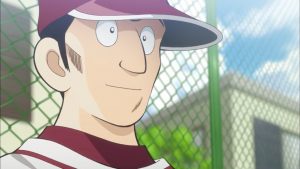 I have to say – if this was indeed the final episode of Mix, that ending would have seriously sucked in a big way. Fortunately it was confirmed this week (though it was all but a certainty anyway) this week that the series is going to run for two cours. What happens after that is another matter – as popular as the series is in Japan, it’s going to be at least a year before we see a second season simply as a matter of letting Adachi regain enough of a lead in terms of material. I’m pretty confident it will come sooner or later, but it’s going to be a while.
I have to say – if this was indeed the final episode of Mix, that ending would have seriously sucked in a big way. Fortunately it was confirmed this week (though it was all but a certainty anyway) this week that the series is going to run for two cours. What happens after that is another matter – as popular as the series is in Japan, it’s going to be at least a year before we see a second season simply as a matter of letting Adachi regain enough of a lead in terms of material. I’m pretty confident it will come sooner or later, but it’s going to be a while.
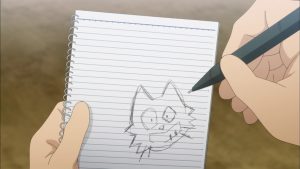 Adachi-sensei having followed his general outline (apart from no one dying), we’ve come to one of those essential nexus points in his baseball manga – the start of the protagonist’s (you may choose to move the apostrophe one space later) first Koushien. Naturally enough Meisei has drawn a fearsome opponent for their first East Tokyo qualifier – Kenjyou High (the former Sumi Tech). Apart from the personal side, this is an interesting matchup in that you have two former baseball powerhouses – short-lived though Meisei’s glory days were they reached the pinnacle – laid low and trying to regain their place.
Adachi-sensei having followed his general outline (apart from no one dying), we’ve come to one of those essential nexus points in his baseball manga – the start of the protagonist’s (you may choose to move the apostrophe one space later) first Koushien. Naturally enough Meisei has drawn a fearsome opponent for their first East Tokyo qualifier – Kenjyou High (the former Sumi Tech). Apart from the personal side, this is an interesting matchup in that you have two former baseball powerhouses – short-lived though Meisei’s glory days were they reached the pinnacle – laid low and trying to regain their place.
 The similarity ends there, though. As Meisei continues to labor in anonymity, Kenjyou (the former Sumi Tech) is already making a name for themselves. They’ve brought in a hotshot coach, Kamiyama-kantoku, from Shikoku. And he’s spent two years as an “assistant” scouting and recruiting top middle-schoolers from all over Tokyo. That’s why Kenjyou (the former Sumi tech) has such a fearsome group of freshmen, and the most fearsome of all is of course is Akai Tomohito, big brother of Meisei’s Junior High’s wounded soccer ace (and fulcrum of a potential love triangle, that could end up being more like a love hexagon).
The similarity ends there, though. As Meisei continues to labor in anonymity, Kenjyou (the former Sumi Tech) is already making a name for themselves. They’ve brought in a hotshot coach, Kamiyama-kantoku, from Shikoku. And he’s spent two years as an “assistant” scouting and recruiting top middle-schoolers from all over Tokyo. That’s why Kenjyou (the former Sumi tech) has such a fearsome group of freshmen, and the most fearsome of all is of course is Akai Tomohito, big brother of Meisei’s Junior High’s wounded soccer ace (and fulcrum of a potential love triangle, that could end up being more like a love hexagon).
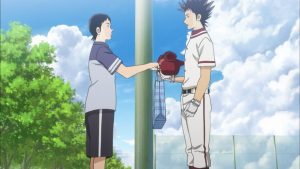 One could be forgiven if they assumed a title like “Because We’re Brothers” referred to the Tachibana kyoudai, but no, it’s the Akai boys in the narrative crosshairs here. We don’t know the reasons why these two don’t get along – certainly Tomohito’s personality could be a factor – but the younger makes it quite clear to Otomi-chan that he’s going to be rooting for Meisei “100%” when the schools face off in the tournament. It’s worth noting, though, that Tomohito actually seems disappointed by this – and the fact that he wants his brother to root for him suggests there’s something to their relationship besides total estrangement.
One could be forgiven if they assumed a title like “Because We’re Brothers” referred to the Tachibana kyoudai, but no, it’s the Akai boys in the narrative crosshairs here. We don’t know the reasons why these two don’t get along – certainly Tomohito’s personality could be a factor – but the younger makes it quite clear to Otomi-chan that he’s going to be rooting for Meisei “100%” when the schools face off in the tournament. It’s worth noting, though, that Tomohito actually seems disappointed by this – and the fact that he wants his brother to root for him suggests there’s something to their relationship besides total estrangement.
 Kenjyou (the former Sumi Tech) may be the comeback school getting the attention (though the reporters have time for a Nomo cameo), but Meisei’s anonymity actually plays to their advantage here. In addition to their press writeups there’s also a full scouting report on Kenjyou (the former Sumi Tech) compiled by Haruka (Touma is disinterested, but only because he knows Souichirou is the one who has the mindset for such things – though he professes to be more interested in data on Haruka, the first tacit admission of his feelings). Not only that, even Nikaidou (who’s faked a cold, like Natsuno-kun, to come watch the game) and his theft of the ace role has worked to Meisei’s advantage – when Kamiyama came to scout Meisei Middle, he never saw Tou-chan pitch.
Kenjyou (the former Sumi Tech) may be the comeback school getting the attention (though the reporters have time for a Nomo cameo), but Meisei’s anonymity actually plays to their advantage here. In addition to their press writeups there’s also a full scouting report on Kenjyou (the former Sumi Tech) compiled by Haruka (Touma is disinterested, but only because he knows Souichirou is the one who has the mindset for such things – though he professes to be more interested in data on Haruka, the first tacit admission of his feelings). Not only that, even Nikaidou (who’s faked a cold, like Natsuno-kun, to come watch the game) and his theft of the ace role has worked to Meisei’s advantage – when Kamiyama came to scout Meisei Middle, he never saw Tou-chan pitch.
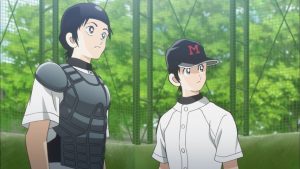 As to the game itself, some things are pretty clear right away. Kamiyama is cocky, but not so much so that he doesn’t realize that Touma is even more impressive in shutting down his proficient lineup than his pitcher, Kita (a sidewinding southpaw) is in shutting down Meisei’s pop-gun order. Also, Akai-kun of the cleanup face is the one hitter in the Kenjyou (the former Sumi Tech) lineup that Touma would be smart not to attack head-on. He doubles in his first at-bat despite being fooled on a changeup, and rips a screaming liner in his second that results in a lucky double-play for Meisei.
As to the game itself, some things are pretty clear right away. Kamiyama is cocky, but not so much so that he doesn’t realize that Touma is even more impressive in shutting down his proficient lineup than his pitcher, Kita (a sidewinding southpaw) is in shutting down Meisei’s pop-gun order. Also, Akai-kun of the cleanup face is the one hitter in the Kenjyou (the former Sumi Tech) lineup that Touma would be smart not to attack head-on. He doubles in his first at-bat despite being fooled on a changeup, and rips a screaming liner in his second that results in a lucky double-play for Meisei.
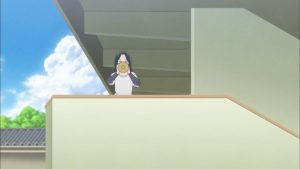 This is the nature of the journey Adachi takes us on. The focus shifts from the personal story to the playing field, and he’s able to make both compelling – and shift between them seamlessly – as few in the history of sports manga have ever been able to do. You know when Koushien starts that the preamble is over, and the main event is officially underway. But with Adachi (all the more so now that he’s switched to a monthly syndication) the journey is a marathon, not a sprint.
This is the nature of the journey Adachi takes us on. The focus shifts from the personal story to the playing field, and he’s able to make both compelling – and shift between them seamlessly – as few in the history of sports manga have ever been able to do. You know when Koushien starts that the preamble is over, and the main event is officially underway. But with Adachi (all the more so now that he’s switched to a monthly syndication) the journey is a marathon, not a sprint.


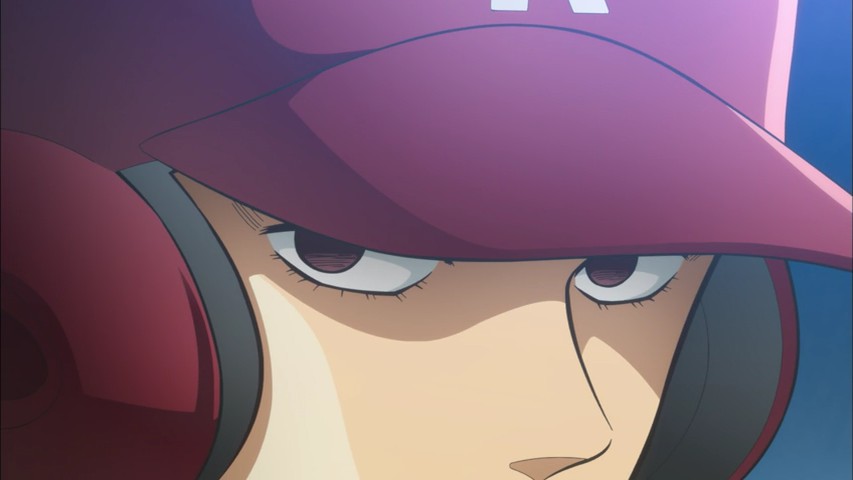
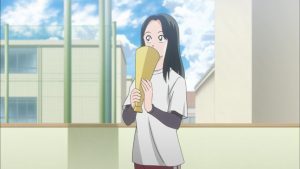
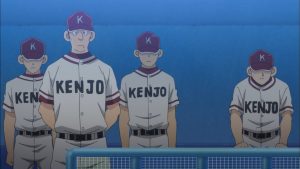

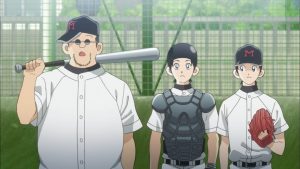
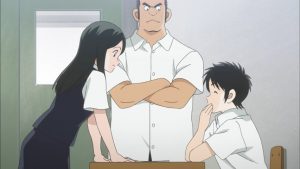

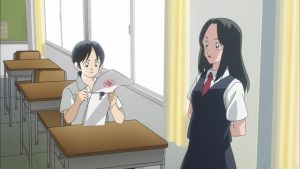




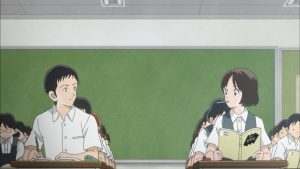

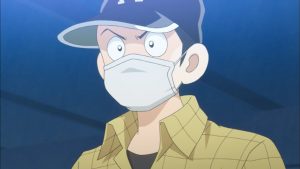
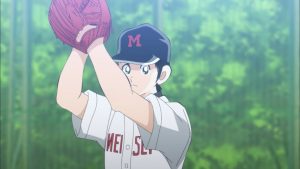
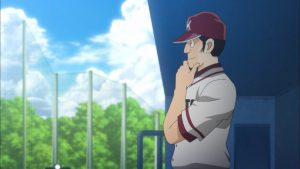
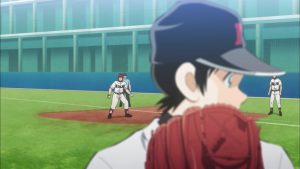
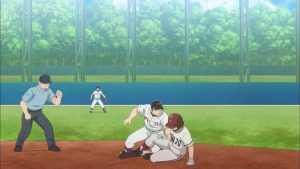
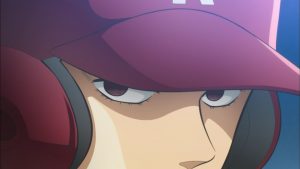
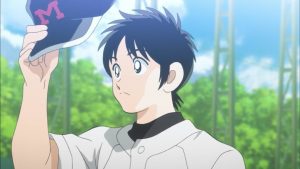

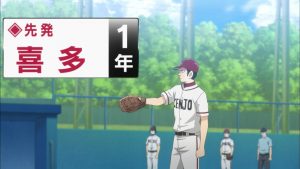
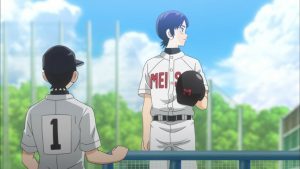
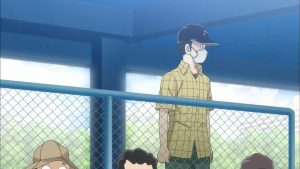
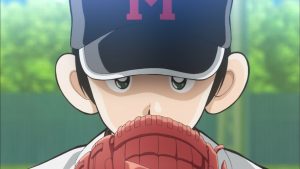
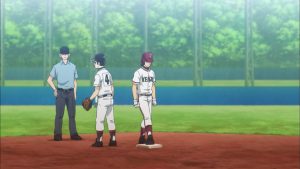
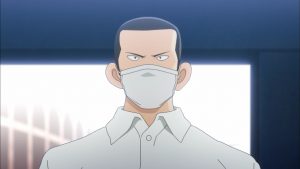
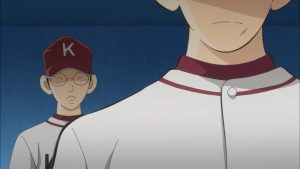
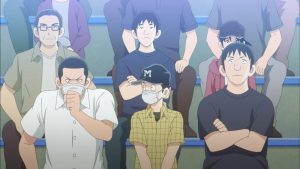

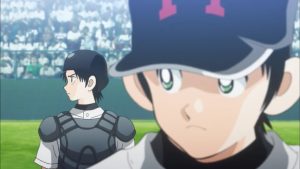
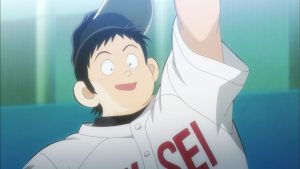

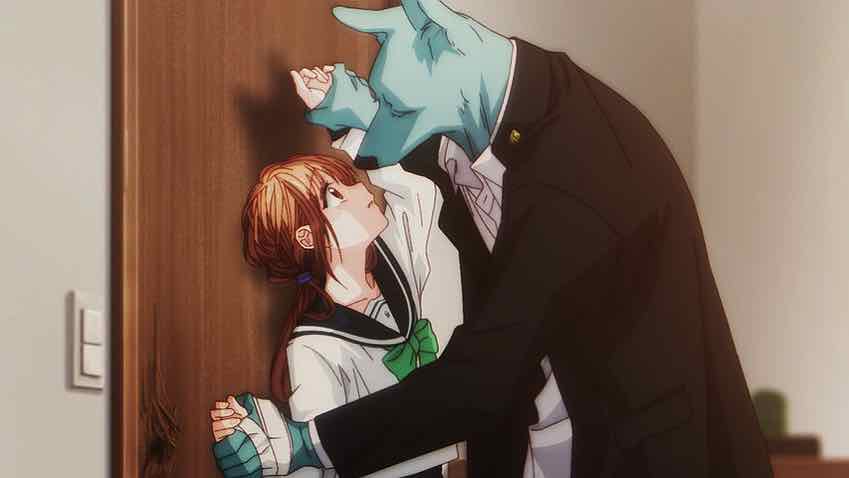
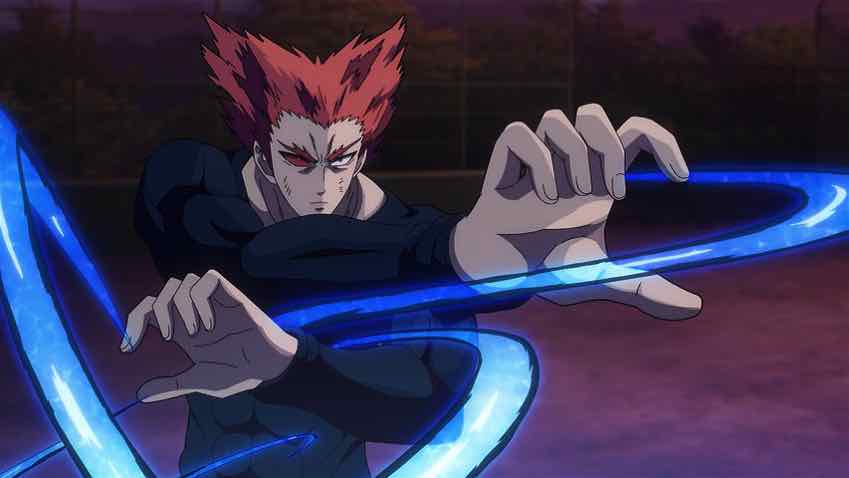
leongsh
June 30, 2019 at 12:50 amPedantry: Not yet Koushien but qualifiers for Koushien.
The roiling bad blood underneath the icy cold relationship between the Akai brothers is tasty for us viewers.
Then there’s the baseball match. While the play action is interesting, it’s the dialogue duting matches that Adachi is fantastic with. While the pitchers throw pitches, he throws wit, puns, sarcasms, put downs, etc. A number of them come with delayed punchline. He also puts in humour in some ofnthe play action as well. Both, but the dialogue in particular, making a tense match fun and delightful to watch.
Guardian Enzo
June 30, 2019 at 8:56 amQualifying for Koushien is still technically Koushien. The name applies both to the national tournament and the stadium it’s named after, and where the final rounds are played.
leongsh
June 30, 2019 at 12:26 pmGenerally, Koushien in the context of high school baseball in Japan means playing at the National High School Baseball Championship at Hanshin Koushien Stadium. It’s about playing the baseball matches at that stadium. Not the qualifiers to earn the spot to play there.